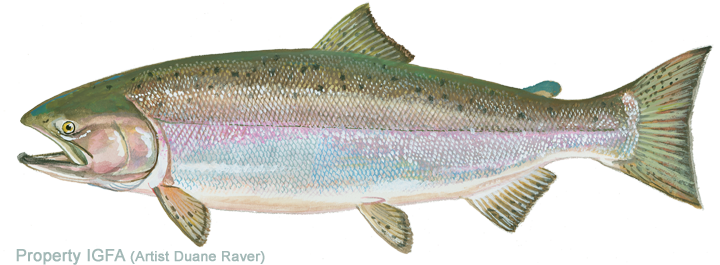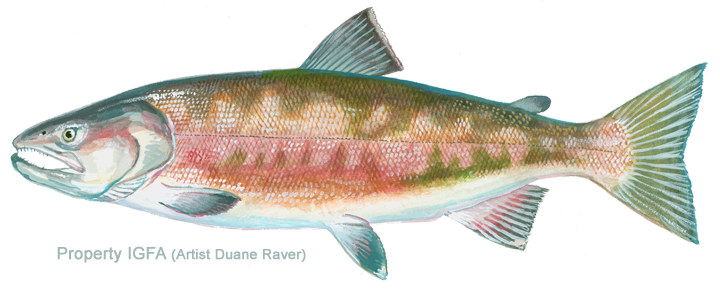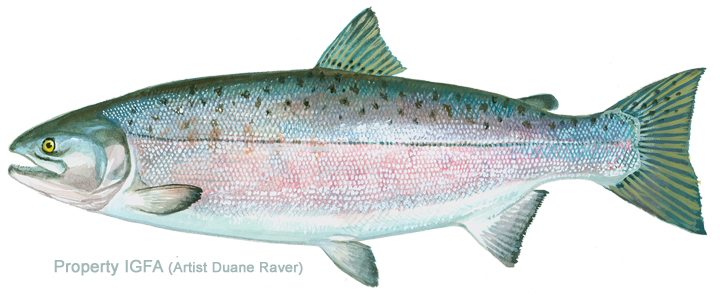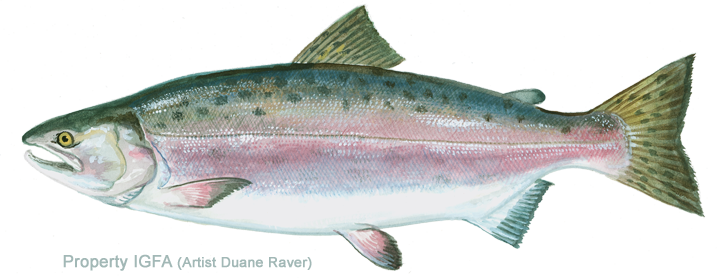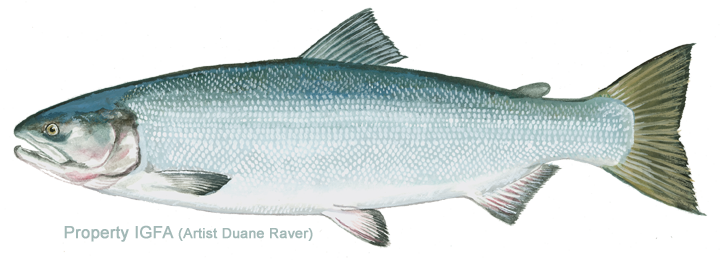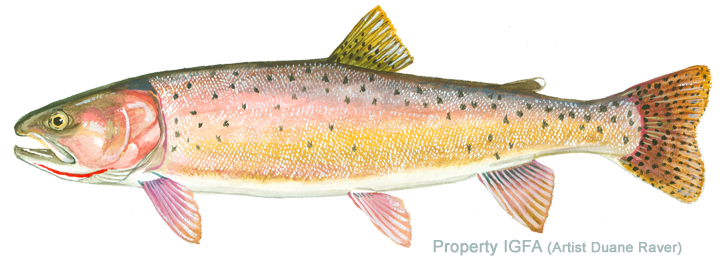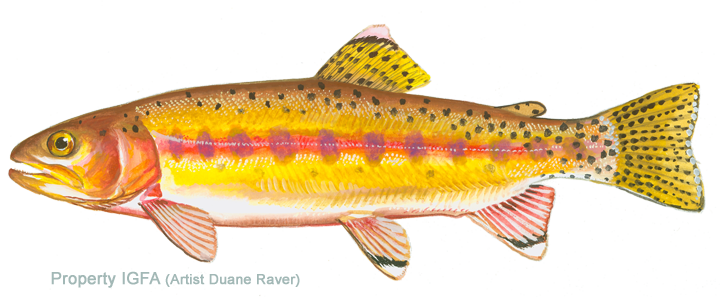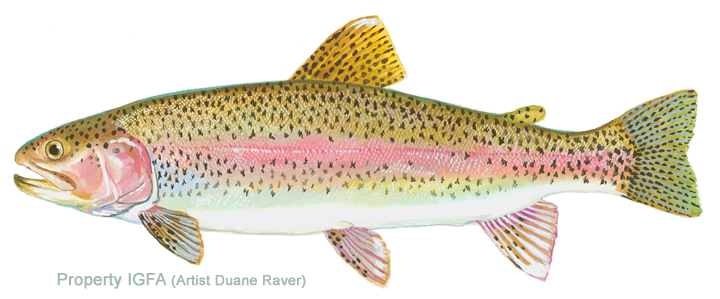Game Fish Identification Reference Guides
Kokanee
(Oncorhynchus nerka)
(Oncorhynchus nerka)

(Walbaum, 1792); SALMONIDAE FAMILY; also called sockeye salmon (anadromous form), landlocked sockeye salmon, little redfish, Kennerly's salmon or Kennerly's trout, landlocked red salmon, and other names, including “silver trout”.
Kokanee are known to occur in Japan, Russia, British Columbia and the Yukon in Canada, and the states of Alaska, Washington, Idaho and Oregon in the U.S.A. They have been introduced into other U.S. states of the northeast and west coasts, including Maine, New York, Vermont, Connecticut, California, Colorado, Montana, North Dakota, Wyoming, Utah and Nevada; and in Canada into Alberta, Saskatchewan, Manitoba and Ontario.
This is a non anadromous, or “landlocked,” form of the sockeye salmon and although the two are the same species and morphologically alike, there are individual differences. The strictly freshwater kokanee does not grow as large as the anadromous sockeye. Maximum size is variable depending on environmental conditions. In one lake in Vermont, for example, stocked kokanee grew to 21 in (53 cm), while eggs from the very same source, used to stock other Vermont lakes, produced kokanee that did not exceed 11 in (28 cm).
Males turn from silvery to red at spawning time, while females become a somewhat darker grayish or grayish red color. Rarely, some freshwater populations, turn dull green or yellow instead of red. Both male and female die after spawning just like anadromous Pacific salmon.
The kokanee is an extremely popular food and sport fish, but its diet consists primarily of planktonic matter (mostly small aquatic crustaceans like “water flies” and a few insects) which makes it a difficult fish to catch with traditional angling gear and baits. However, using a small piece of worm, a kernel of corn, a salmon egg, or insect larva such as a maggot as bait, or fly fishing with similar imitations have been successful. It is considered a delicacy when smoked
Kokanee are known to occur in Japan, Russia, British Columbia and the Yukon in Canada, and the states of Alaska, Washington, Idaho and Oregon in the U.S.A. They have been introduced into other U.S. states of the northeast and west coasts, including Maine, New York, Vermont, Connecticut, California, Colorado, Montana, North Dakota, Wyoming, Utah and Nevada; and in Canada into Alberta, Saskatchewan, Manitoba and Ontario.
This is a non anadromous, or “landlocked,” form of the sockeye salmon and although the two are the same species and morphologically alike, there are individual differences. The strictly freshwater kokanee does not grow as large as the anadromous sockeye. Maximum size is variable depending on environmental conditions. In one lake in Vermont, for example, stocked kokanee grew to 21 in (53 cm), while eggs from the very same source, used to stock other Vermont lakes, produced kokanee that did not exceed 11 in (28 cm).
Males turn from silvery to red at spawning time, while females become a somewhat darker grayish or grayish red color. Rarely, some freshwater populations, turn dull green or yellow instead of red. Both male and female die after spawning just like anadromous Pacific salmon.
The kokanee is an extremely popular food and sport fish, but its diet consists primarily of planktonic matter (mostly small aquatic crustaceans like “water flies” and a few insects) which makes it a difficult fish to catch with traditional angling gear and baits. However, using a small piece of worm, a kernel of corn, a salmon egg, or insect larva such as a maggot as bait, or fly fishing with similar imitations have been successful. It is considered a delicacy when smoked













